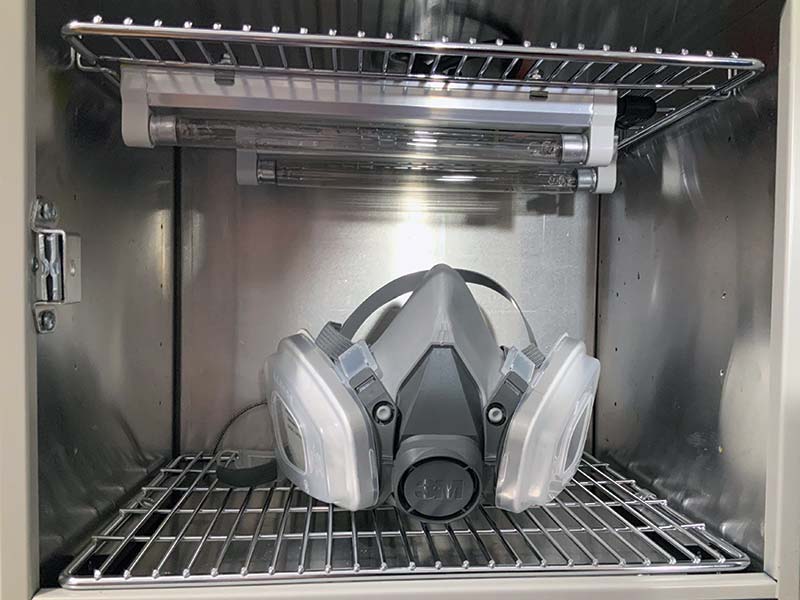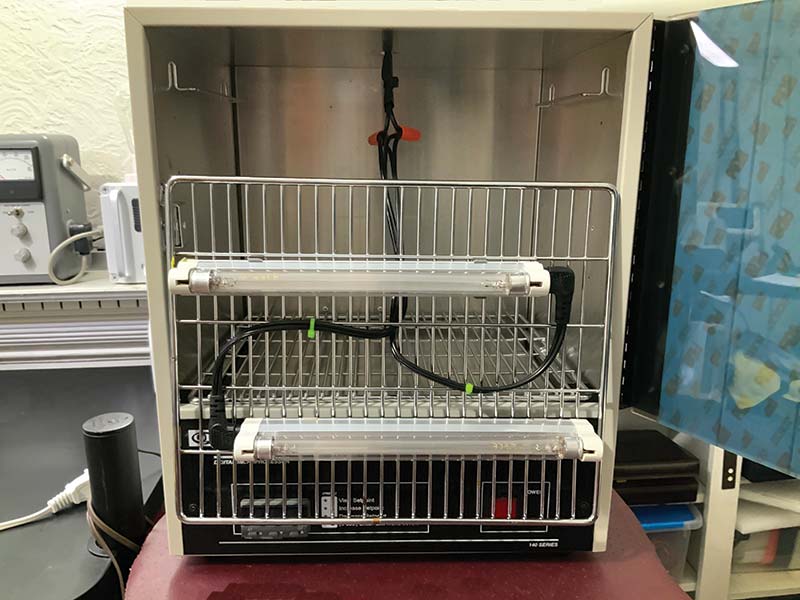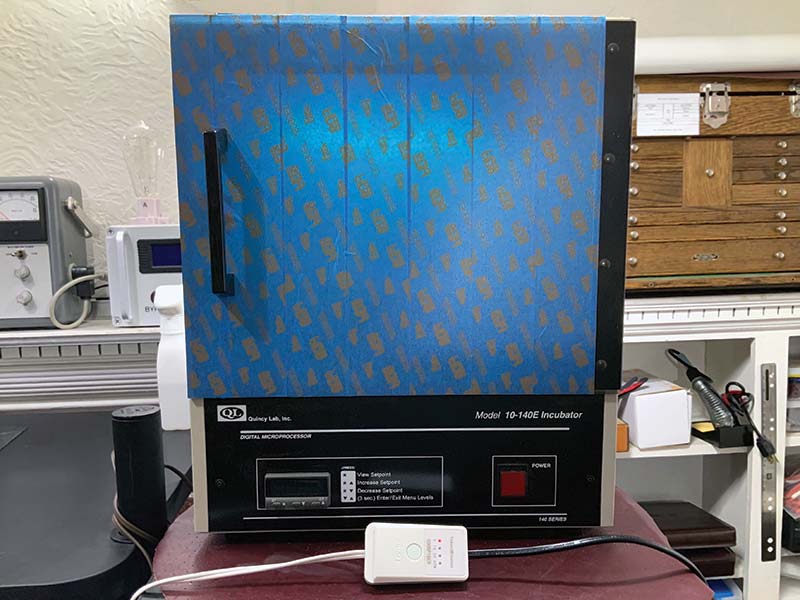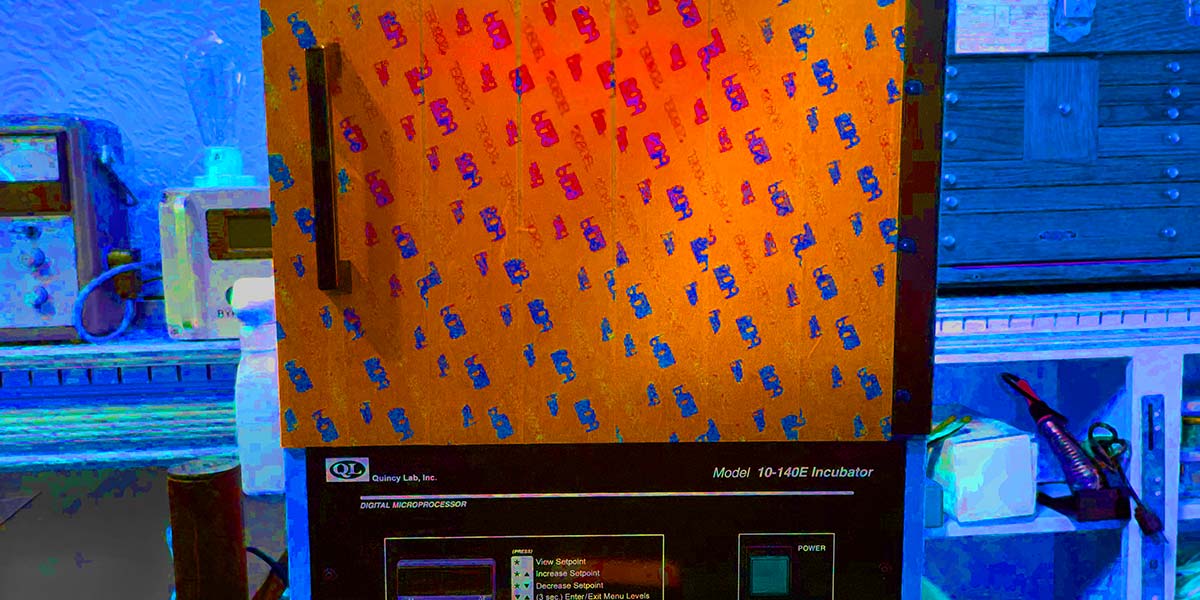In response to the first article on how to build and evaluate a UV sanitizer based on a broad spectrum UV LED panel, I’ve been asked to build several high-power UV sanitizers specifically for decontaminating respirators used to mitigate Covid-19 spread. This article details how you can build an affordable sanitizer that can help keep your respirators, cell phone, and other small personal items relatively virus free.
UVC vs. UV
If you aren’t familiar with UV light, then stick with the first version of the UV sanitizer. Broad spectrum UV light is visible, so you’re less likely to stare into the source. It’s also relatively benign to the skin in small, short doses.
For a given power output, UV is less effective in killing viruses and bacteria than UVC, which has a shorter wavelength and therefore higher energy level photons. Recall that:
E=hf
E = photon energy
h = Planck’s constants
f = Wave frequency
At 254 nm (the wavelength of the light we’re dealing with in this project), the energy per photon is 2-4 times the energy per photon at the lower spectrum of broad band UV.
The Build
The light source is specific for this project. You can either buy a pair of the “UV-C ultraviolet bulb 6W with timer” from Amazon ($40 each) or the bulb assemblies without a timer on eBay (“6W UV-C Germicidal Light Bulb,” $17). I’ve purchased both and the only difference is the timer, which is a nice feature. As of this writing, both sources have product in stock.
This project demands a reflective metal enclosure, and preferably something that can tolerate heat. For home use, I repurposed an incubator, as in Figures 1-3. For commercial projects, however, I’ve used toaster ovens.

Figure 1. UV Sanitizer 2, inside view. Two 9” UVC lamps provide a total of 12W at 254 nm.
Amazon has a variety of ovens that sell for $30-$55. My favorite oven for repurposing is the Rosewill RHTO-19001 ($55), which is about the size of a small microwave oven.
You can mount the bulbs directly on the inside cavity roof or as in Figure 2, to a shelf that sits above most of the cavity. I’ve mounted a pair of bulbs to the shelf, but you can get away with one if you like. Two bulbs provide more coverage, more energy, and therefore a shorter required treatment time.

Figure 2. Attaching two bulb assemblies to the metal rack of an incubator.
Figure 3 shows the repurposed incubator with the small white timer in front. A nice feature of the timer is that it gives you 20 seconds or so to get clear of the sanitizer once you’ve activated the switch.

Figure 3. UV Sanitizer 2, external view.
Normal Use
As with version 1 of the UV sanitizer, use is straightforward. If you can use a microwave oven, then you are more than qualified to use V2 of the sanitizer.
Put whatever you want to sanitize in the box, making sure that light from the UV-C bulbs will reach the surface you want treated. Close the cover to whatever you have and hit the power switch. After five minutes, your objects should be relatively germ free.
Remove the objects, close the box, and turn on the UV light for another couple minutes to clean the box before the next use. Also, don’t handle items directly, but use a set of forceps or even a pair of chop sticks.
Safety
This isn’t the black light used in dance halls. Never look at an energized bulb directly! Never allow the light to hit your bare skin! In short, think of your UVC sanitizer as a microwave oven. When activated, keep your eyes and skin and your body in general away from the sterilizer.
Light at 254 nm is only faintly visible, and the temptation to peek at a bulb to determine if it’s energized is forever present. One way to address the temptation is to use a pair of quality safety goggles designed to block light at 245 nm whenever you work with or around the sanitizer.
For example, I use a pair of Eagle Pair safety goggles designed to attenuate 190-540 nm by a factor of at least five (Amazon, $45).
Get a good pair of goggles made for laser work; they’ll be useful when you work with lasers and other IR projects. NV




